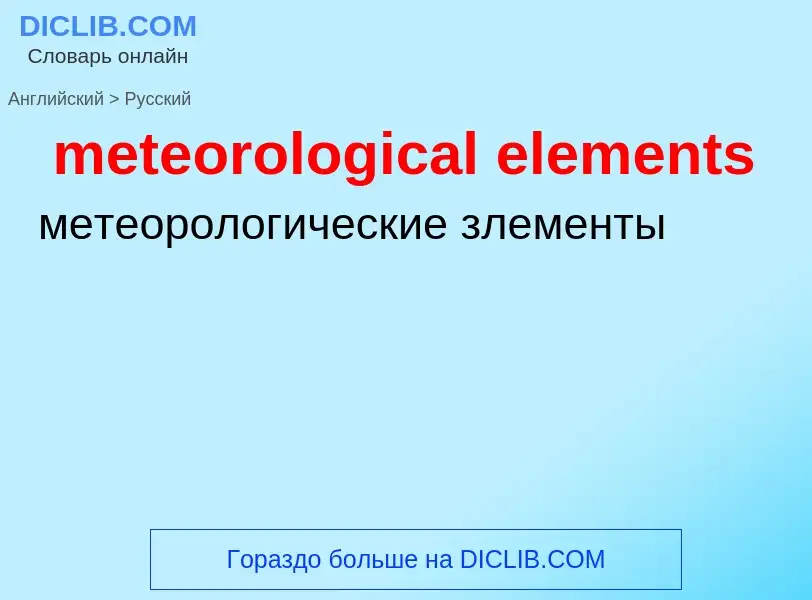Перевод и анализ слов искусственным интеллектом ChatGPT
На этой странице Вы можете получить подробный анализ слова или словосочетания, произведенный с помощью лучшей на сегодняшний день технологии искусственного интеллекта:
- как употребляется слово
- частота употребления
- используется оно чаще в устной или письменной речи
- варианты перевода слова
- примеры употребления (несколько фраз с переводом)
- этимология
meteorological elements - перевод на русский
математика
"Начала" Евклида
Определение
Википедия

In aviation, visual meteorological conditions (VMC) is an aviation flight category in which visual flight rules (VFR) flight is permitted—that is, conditions in which pilots have sufficient visibility to fly the aircraft maintaining visual separation from terrain and other aircraft. They are the opposite of instrument meteorological conditions (IMC). The boundary criteria between IMC and VMC are known as the VMC minima and are defined by: visibility, cloud ceilings (for takeoffs and landings), and cloud clearances.
The exact requirements vary by type of airspace, whether it is day or night (for countries that permit night VFR), and from country to country. Typical visibility requirements vary from one statute mile to five statute miles (many countries define these in metric units as 1,500 m to 8 km). Typical cloud clearance requirements vary from merely remaining clear of clouds to remaining at least one mile away (1,500 m in some countries) from clouds horizontally and 1,000 feet away from clouds vertically. For instance, in Australia, VMC minima outside controlled airspace are clear of cloud with 5,000 m visibility below 3,000 ft AMSL or 1,000 ft AGL (whichever is higher), and 1,000 ft vertical/1,500 m horizontal separation from cloud above these altitudes or in controlled airspace. Above 10,000 ft, 8,000 m visibility is required to maintain VMC. Air traffic control may also issue a "special VFR" clearance to VFR aircraft, to allow departure from a control zone in less than VMC – this reduces the visibility minimum to 1,600 m.
Generally, VMC requires greater visibility and cloud clearance in controlled airspace than in uncontrolled airspace. In uncontrolled airspace there is less risk of a VFR aircraft colliding with an instrument flight rules (IFR) aircraft emerging from a cloud, so aircraft are permitted to fly closer to clouds. An exception to this rule is class B airspace, in which ATC separates VFR traffic from all other traffic (VFR or IFR), which is why in class B airspace lower cloud clearance is permitted.


.jpg?width=200)
![Byrne]]'s ''The Elements of Euclid'' and published in colored version in 1847. Byrne]]'s ''The Elements of Euclid'' and published in colored version in 1847.](https://commons.wikimedia.org/wiki/Special:FilePath/Byrne 1847 Satz des Pythagoras Hochformat.jpg?width=200)
![A page with marginalia from the first printed edition of ''Elements'', printed by [[Erhard Ratdolt]] in 1482 A page with marginalia from the first printed edition of ''Elements'', printed by [[Erhard Ratdolt]] in 1482](https://commons.wikimedia.org/wiki/Special:FilePath/Euclid's Elements, 1482.jpg?width=200)


![Ishaq ibn Hunayn's]] Arabic Translation of Elementa. [[Iraq]], 1270. [[Chester Beatty Library]] Ishaq ibn Hunayn's]] Arabic Translation of Elementa. [[Iraq]], 1270. [[Chester Beatty Library]]](https://commons.wikimedia.org/wiki/Special:FilePath/Illustrated Opening. Arabic Translation of Euclid's Elementa (CBL Ar 3035, ff.105b-106a).jpg?width=200)
![A fragment of Euclid's ''Elements'' on part of the [[Oxyrhynchus papyri]] A fragment of Euclid's ''Elements'' on part of the [[Oxyrhynchus papyri]]](https://commons.wikimedia.org/wiki/Special:FilePath/P. Oxy. I 29.jpg?width=200)
![[[Artus Wolffort]], ''The Four Elements'', before 1641 [[Artus Wolffort]], ''The Four Elements'', before 1641](https://commons.wikimedia.org/wiki/Special:FilePath/Artus Wolffort - The Four Elements.jpg?width=200)

